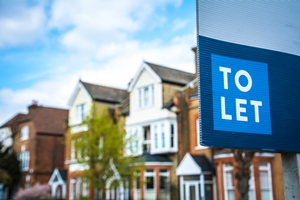How much could you afford when you buy abroad? We look at how to answer this all-important question, from your property purchase budget to planning for the regular and one-off costs of your life ahead.
Buying abroad is an exciting step, and it’s tempting to dive right into looking at properties, but the first thing you need to do is to set your budget. It’ll give you a realistic idea – and sometimes a pleasant surprise – of what you can afford, and of what you’ll need to keep aside for later. Here’s how to work it out:
1. Work out how much capital you have available
Tot up how much available cash you have, such as savings in accessible accounts, any gifts or inheritances.
Add to this any potential capital available to you. If you’re selling your UK home, how much money could you raise from that, minus selling costs? Do you have any assets you’d like to sell, such as art or furniture pieces, that you could raise further money from?
2. Find out how much money you could borrow
If you will need to get a mortgage, find out early how much you could potentially borrow by getting an agreement in principle. It’s often a good idea, especially for higher budgets, to speak to an independent mortgage advisor, as they will often have access to deals that are not available to the general public, or can negotiate on your behalf.
3. Translate that into the purchase currency
For anyone from the UK buying in Europe, knowing how much capital you have available in pounds isn’t the full story. You need to know what it is in euros, but that is difficult to predict. The currency markets never stop moving, so, if you’re trying to work out your budget for a purchase several months down the line, it’s extremely difficult to know what those pounds will actually get you.
At the end of December, a €150,000 house would have cost £125,000. Just one week later, that would have gone up to £130,000; a difference of £5,000. Then, another week later, it would have been halfway back down to £128,000. The markets don’t just go in one direction, and you can never guess which point in the ‘up and down’ you’re going to find yourself purchasing.
That’s why most of our clients choose to use a fixed rate, with no extra fees. It means that, on payment of a deposit, you use the same currency rate for the next year, no matter what happens to the markets. That way, you know exactly how much your sterling budget is in euros, and you can move onto the next step.
3. Calculate buying fees and costs
With your euro budget fixed, it’s time to subtract costs to find out how much you have to buy with. These will be different between countries and companies, but find out:
- Buying fees: in some countries, like France, the buyer is responsible for the estate agent’s fees
- Optional extras: if you choose to have a survey, as is often advisable, then you will need to pay a small fee
- Notary’s and solicitor’s fees: in most European countries, you’ll be looking at notary’s fees of between 1% and 4% of the purchase price
4. Find out your tax liability
Calculate what taxes you’ll need to pay, including VAT. In some countries, like Spain, you’ll need to pay property transfer tax. If you’re selling another property in that country, you’ll also need to pay capital gains tax.
5. Budget for moving in
It might be early days, but get quotes early on for removals, so you know what to expect further down the line. Make sure to put money aside out of your budget for any interior decorating or remodelling and furnishing your new property. As an extra tip, you can prefund your account with Smart so you have money ready to send when you do move over – so you’re not caught out when you do move over.
6. Subtract your costs from your capital
Finally, subtract your costs from your capital, and you will get a good, realistic figure in euros of how much you can afford. With that, it’s time to start property hunting. Begin today and you could well be in place by the end of the year.
To find out more about securing a realistic budget in your currency of choice, speak to a trader today on (+44) 20 7898 0541 or, if you haven’t already, open a no-obligation account today.





















